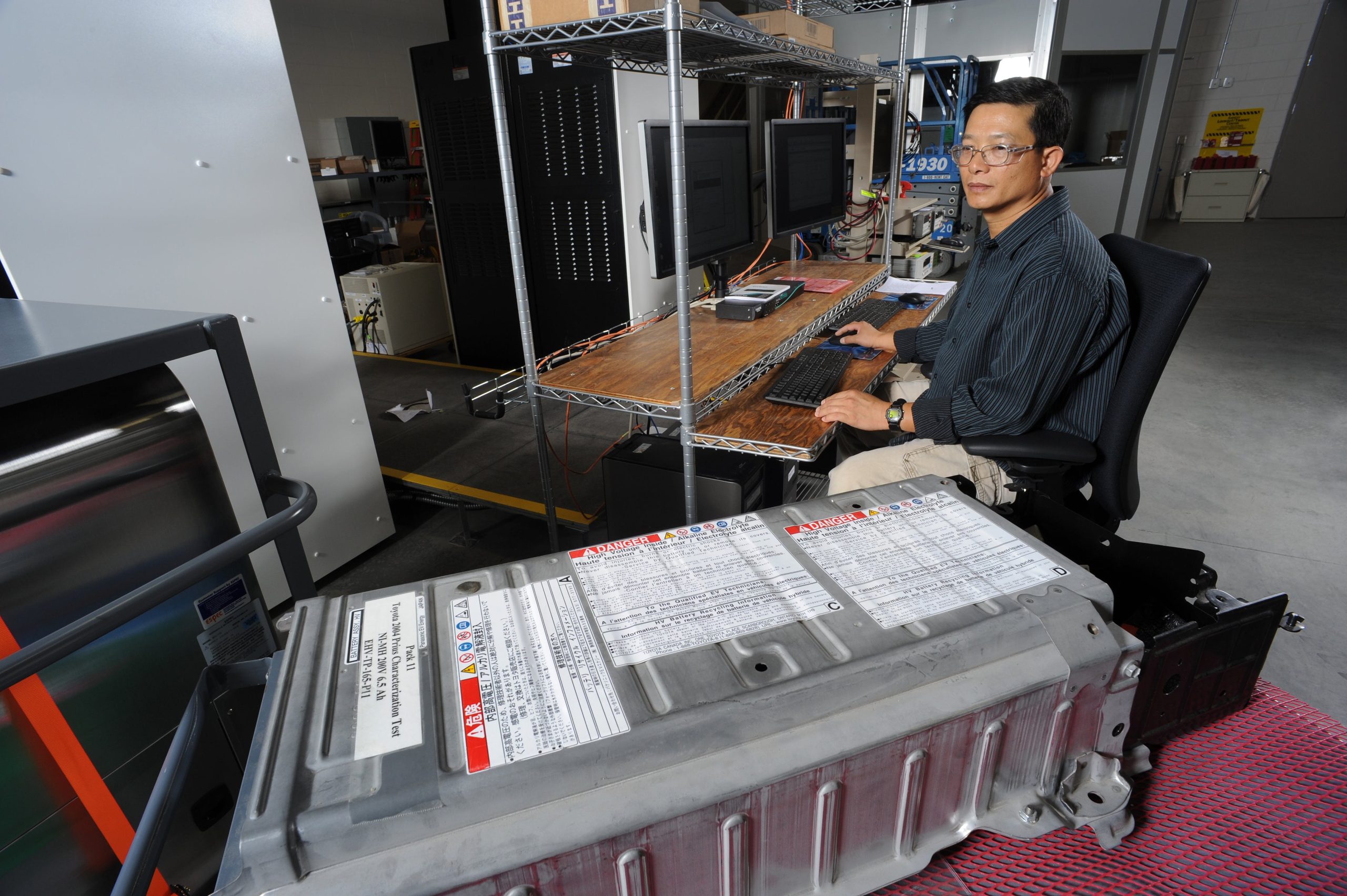Lithium-ion batteries don’t last forever. They wear out and eventually die, with operating conditions sometimes speeding up the process.
Fast charging could recharge an electric vehicle battery in minutes rather than hours, but doing so can rapidly age a battery. The key word, though, is “can.” Batteries react differently to fast charging because of design, material and manufacturing variations. Early detection and classification of battery aging during fast charging would benefit researchers studying how to improve batteries, battery makers, and eventually the public by helping to ensure batteries last and improving battery safety.
Now, a new technique developed by Idaho National Laboratory (INL) researchers makes it easier to spot possible battery troubles earlier than ever before. INL scientists described their work in a recent paper published by the journal Cell Reports Physical Science.
The research supports the Department of Energy’s efforts to advance extreme fast charging technology, which potentially offers an electric vehicle recharge comparable to the time it takes to fill a gasoline-powered car. So, a driver could pull into an extreme fast charging station with drained batteries and be back on the road in as little as 10 to 15 minutes.
In evaluating extreme fast charging, the INL team ran into challenges with what was going on inside the batteries, said Tanvir Tanim, group lead for energy storage technology and a co-author of the paper. “When we began our work on fast charging, we started to see all these issues, like lithium plating.”
With plating, the lithium covered and stuck to the outer surfaces of the battery electrodes. As a result, the plated lithium no longer took part in the charge/discharge cycle, effectively disappearing because it was locked away inside the battery. With plating, there also was the potential for internal shorting and catastrophic events like fire and explosion.
Even without the worst happening, as the internal inventory of lithium shrank, battery performance dropped. Avoiding this aging speedup would increase the life of the battery and potentially impact battery safety.
Following the battery cycle
For the scientists, that meant doing the basic research in INL’s Battery Research Laboratory to understand how factors such as charging methods, materials composition or construction techniques could affect a battery.

Armed with that knowledge, battery manufacturers, car makers and charging station operators could make changes to prevent lithium plating and minimize its contribution to premature aging.
So, spotting lithium plating quickly was vital. The researchers sent batches of batteries through charge-discharge cycles and collected data, but that information only indirectly showed what was going on with lithium plating.
“As the battery is cycling, we are taking the physical parameters, such as the voltage and the current during each of the charge-discharge cycles. So, that’s a lot of data and it’s evolving with time,” said Bor-Rong Chen, a postdoctoral researcher and lead author of the research paper.
She added that a typical testing cell batch generates multiple gigabytes of this voltage-current data over the months that an experiment runs. What’s more, in recent research, INL tested hundreds of cells for fast-charging batteries that benefit electric vehicle use. This created a mountain of data, and hidden within it were telltale early signs of lithium plating. Those indications, though, were so subtle that it took scientists analyzing the data using traditional methods more than 100 cycles to detect aging.
Is machine learning enough?
To find those signals, the INL team decided to apply machine learning. Like human learning, from which the term is derived, machine learning classifies items according to patterns. Show a machine learning algorithm enough pictures of fish, and it eventually figures out what characteristics make a fish a fish. From then on, the software can successfully place new objects into one of two categories: fish or not fish.
A pure machine learning approach requires a lot of data to train on, which can be expensive and time consuming to generate. On top of that, machine learning doesn’t yield any information beyond the classification itself. In the case of battery aging, machine learning alone would not produce any insight into the reasons behind premature aging.
To get around both problems, researchers decided on a machine learning approach using multiple electrochemical signatures. In practice, this meant they chose to measure and use parameters that reflected what was going on in the battery. For example, the ratio between two specific phenomena – the Columbic efficiency or the charge and discharge capacity within the same charge cycle – is impacted by lithium plating. This and other electrochemical signatures changed in a uniform way for normal, unavoidable aging mechanisms but in a variable way during lithium plating.
Research results indicated that this machine learning with the physics-based signature method is significantly more reliable than previous methods and can more quickly spot a battery going bad. The group has applied for a patent for the technique, according to Tanim.
This approach could speed up the transition of battery technology from benchtop research and development to commercial deployment by shortening the validation process, which currently takes years. Spotting premature aging sooner would cut the amount of testing cycles needed, saving substantial time and potentially shortening the validation process to only months or weeks. Other applications of the technique could include monitoring a battery during operation to reduce the likelihood of catastrophic failure, possibly resulting in life-threatening safety hazards.
Eventually, the information from this research and other work could lead to batteries and operating methods that enable fast charging while minimizing rapid aging. Batteries will then charge much faster without dying before their time.
What’s more, using the technique could pay off for research in other ways as well. “We are going to get some more information about why the cell fails. This is going to be a very important factor for battery R&D,” Chen said.
Check out a virtual tour of INL’s Battery Test Center.





